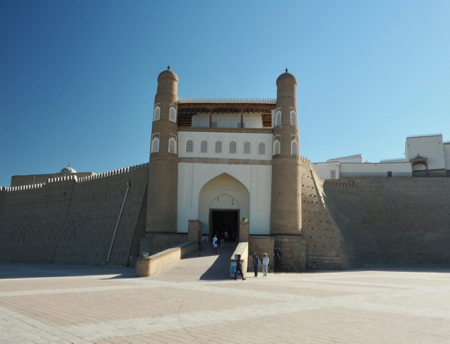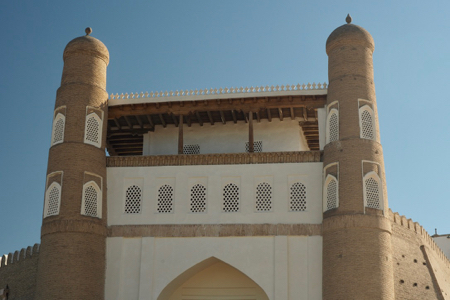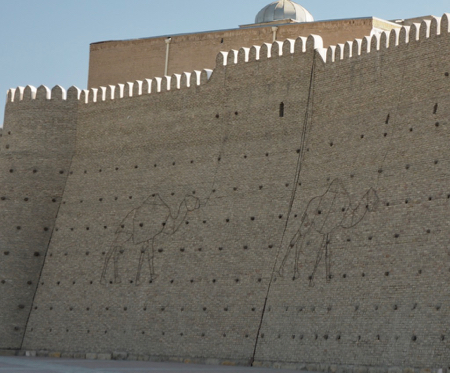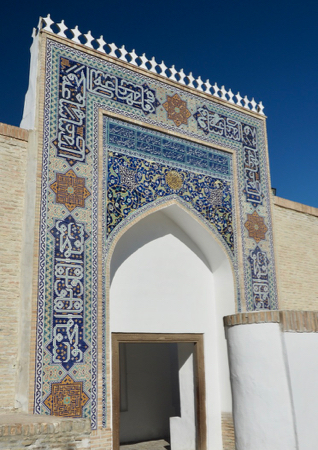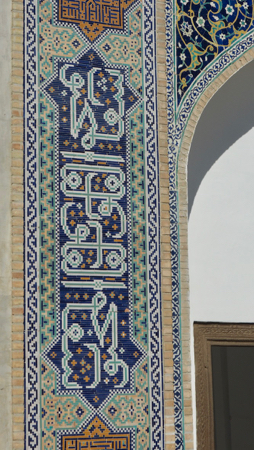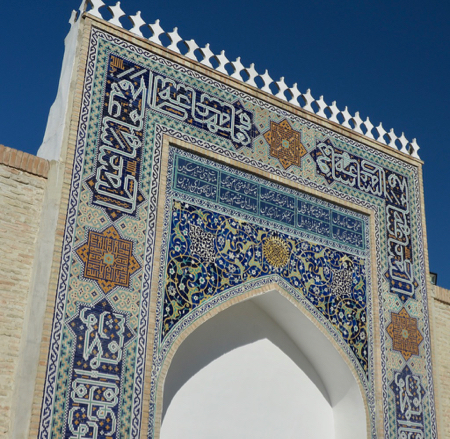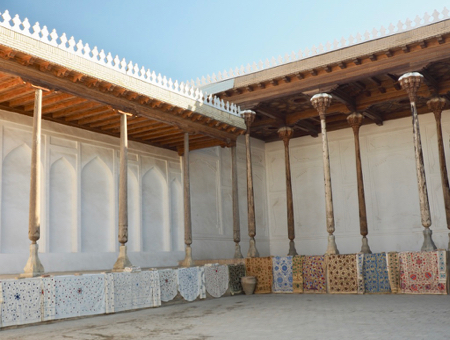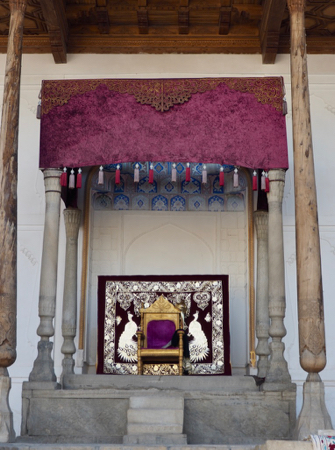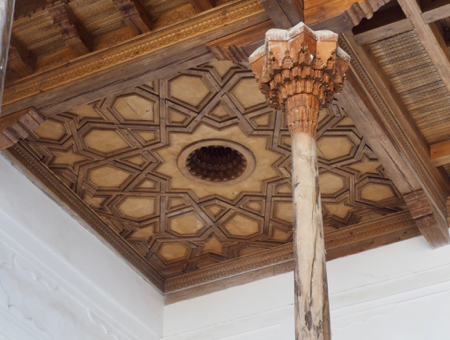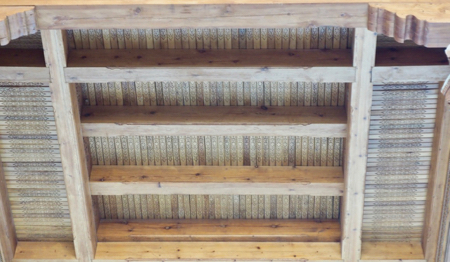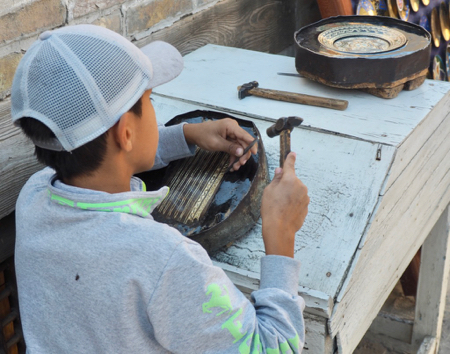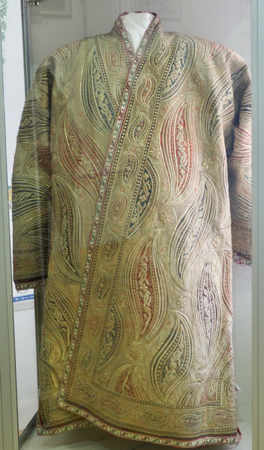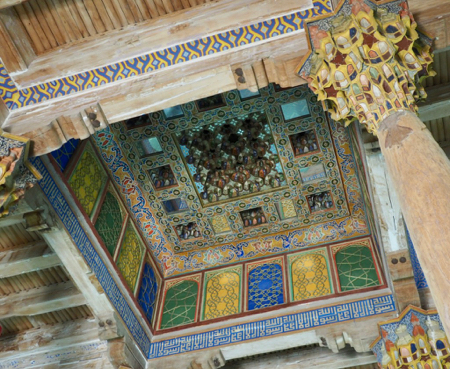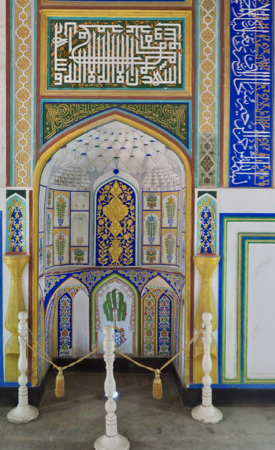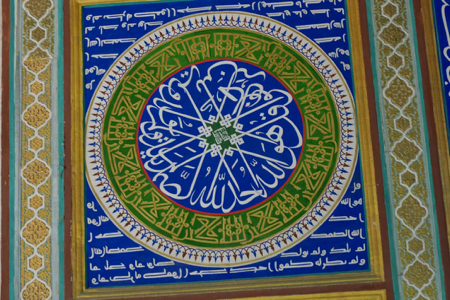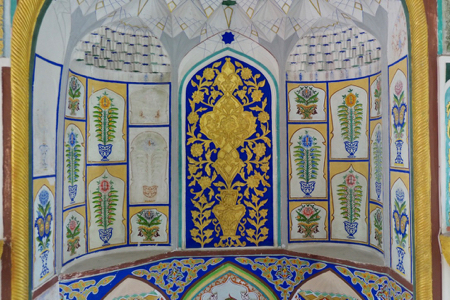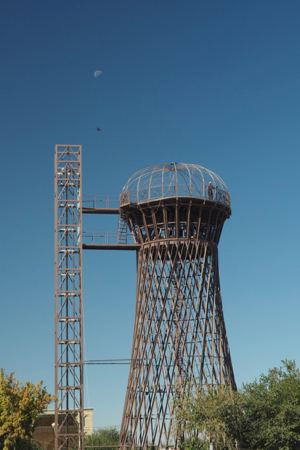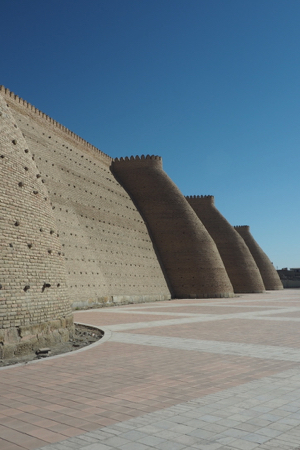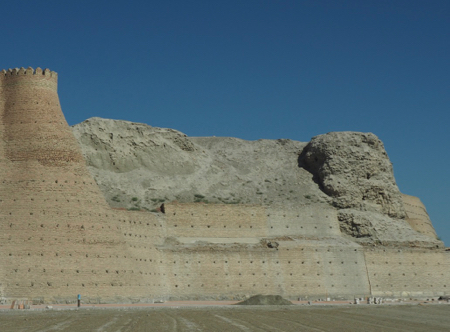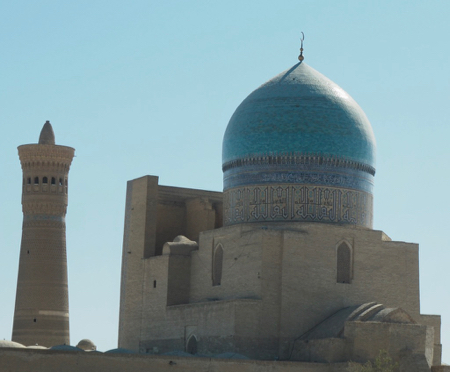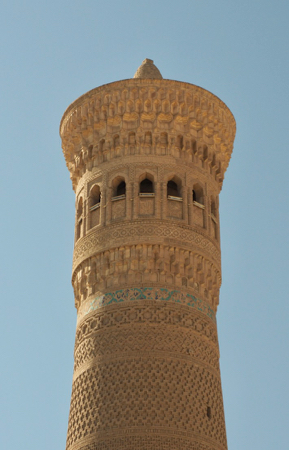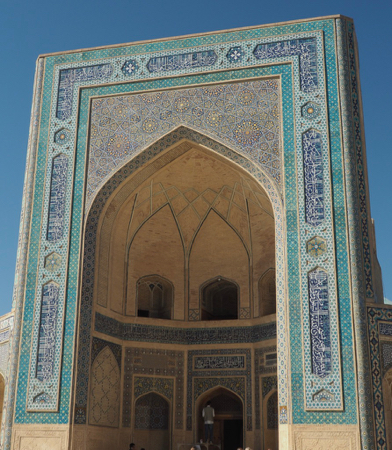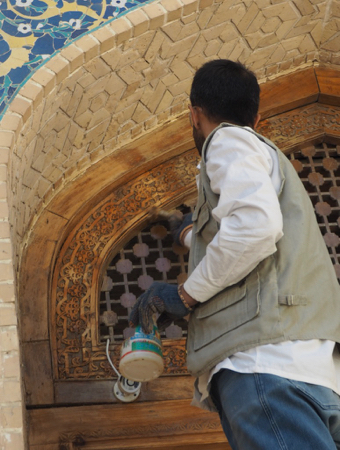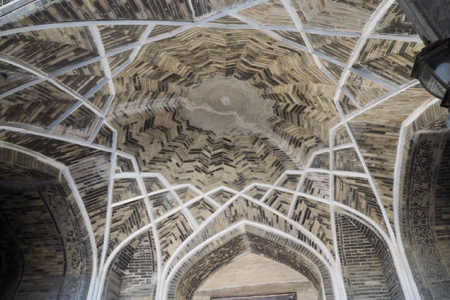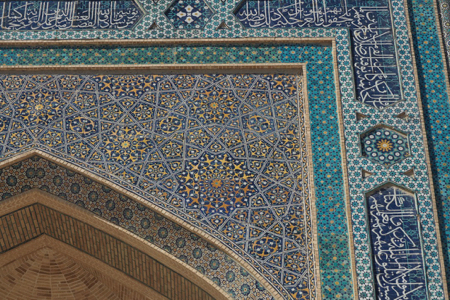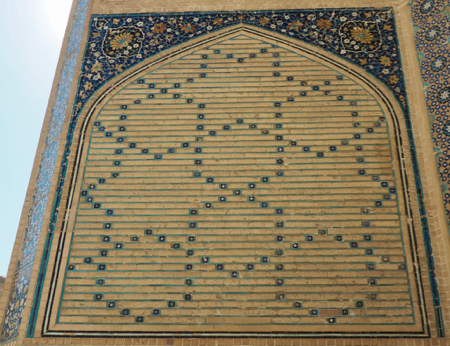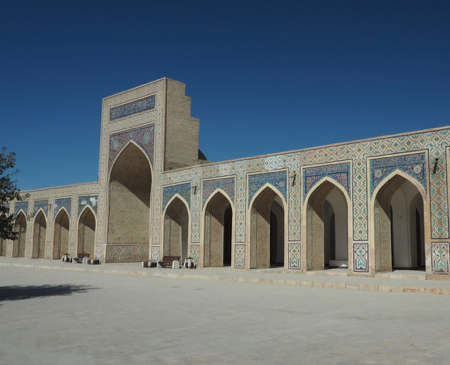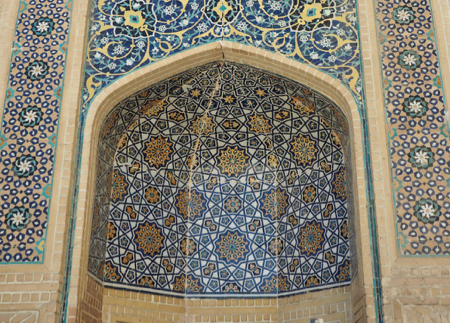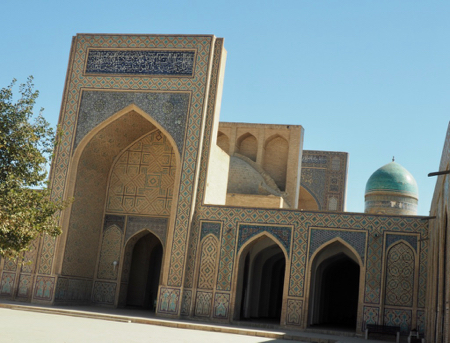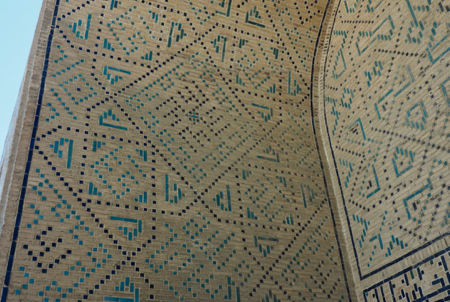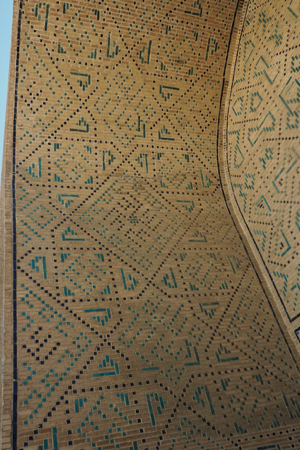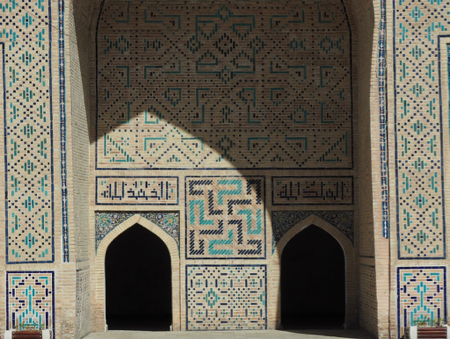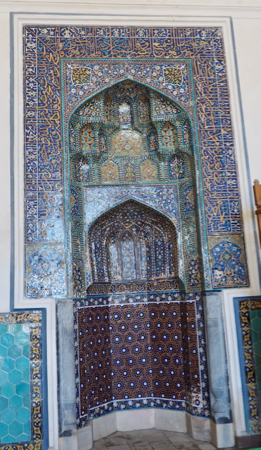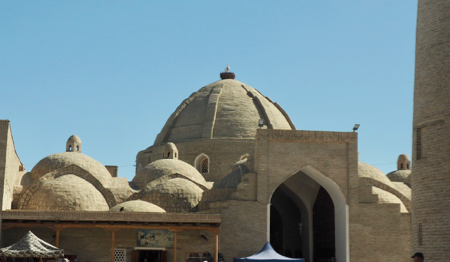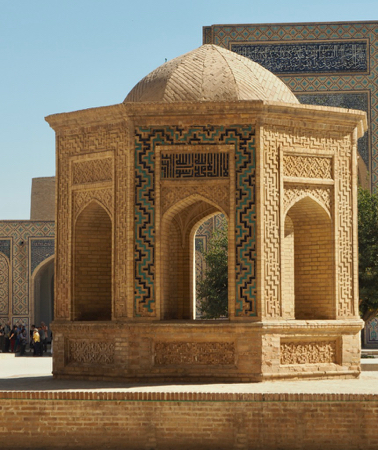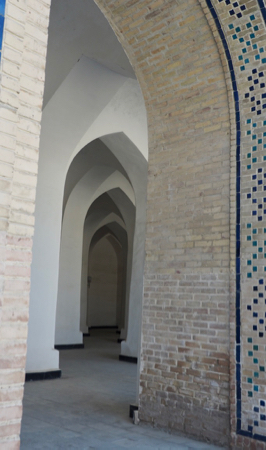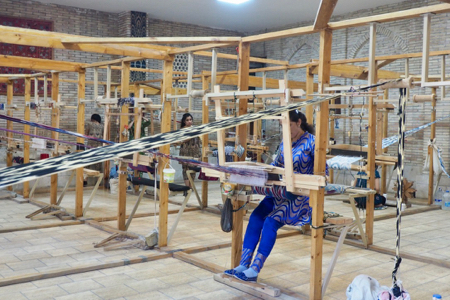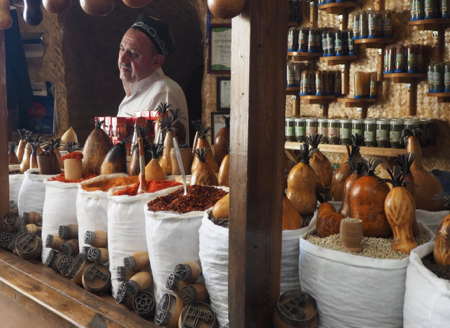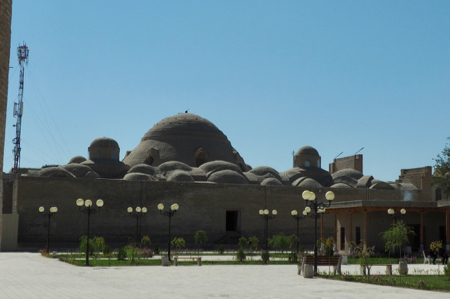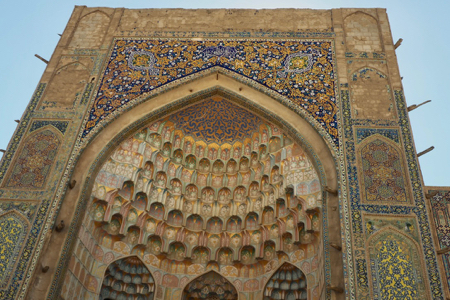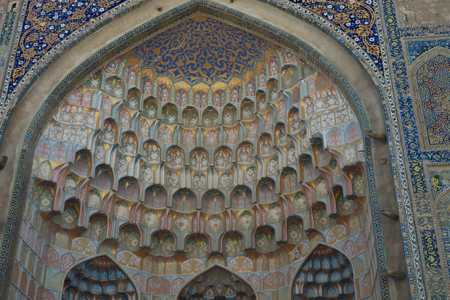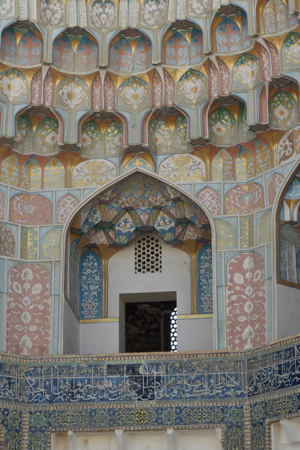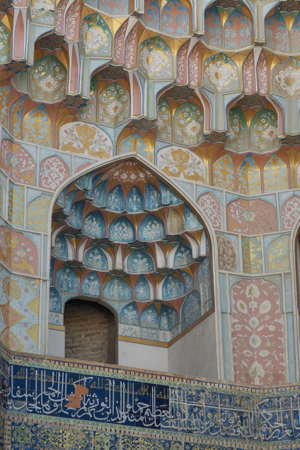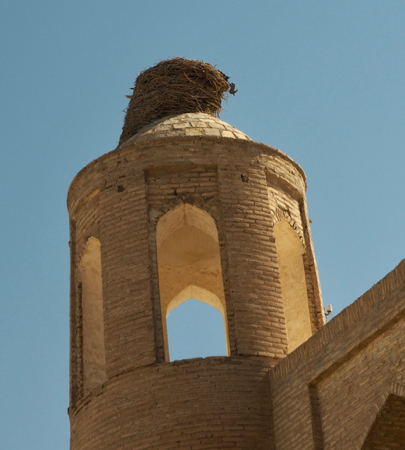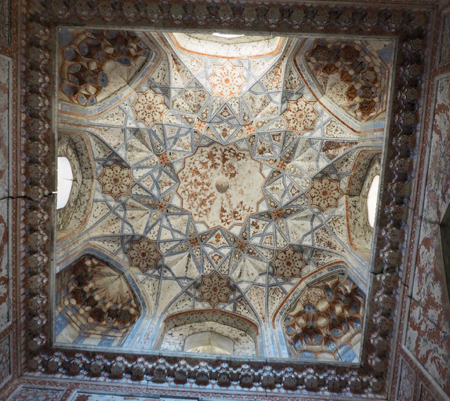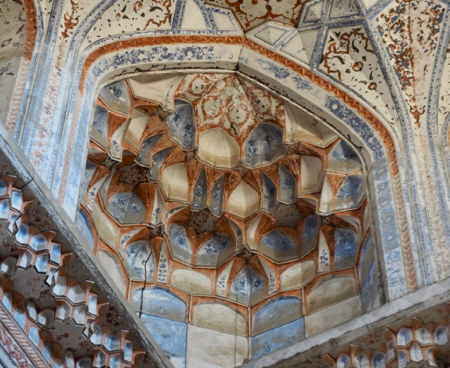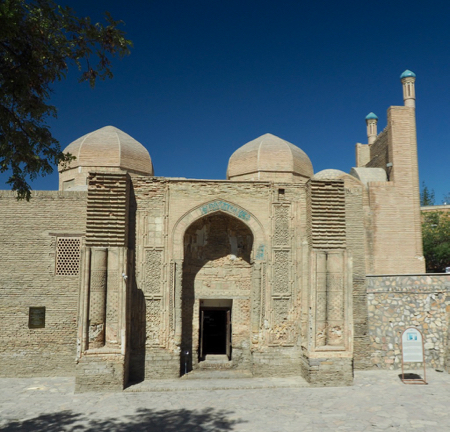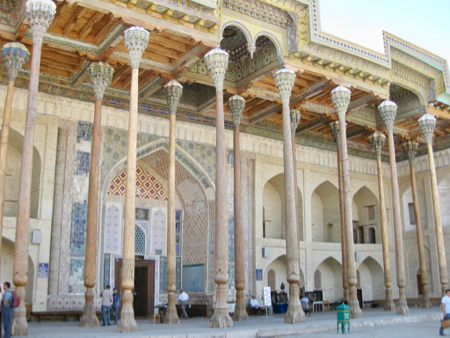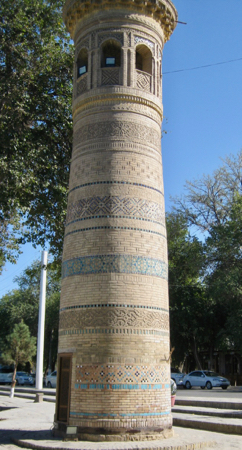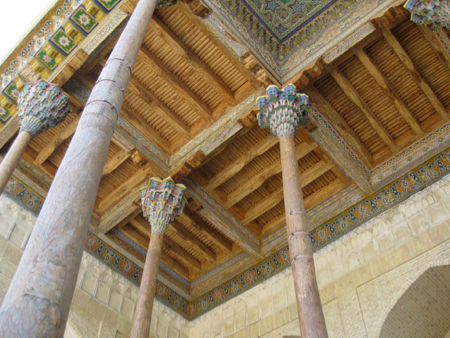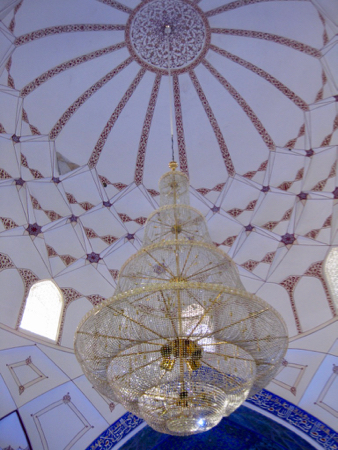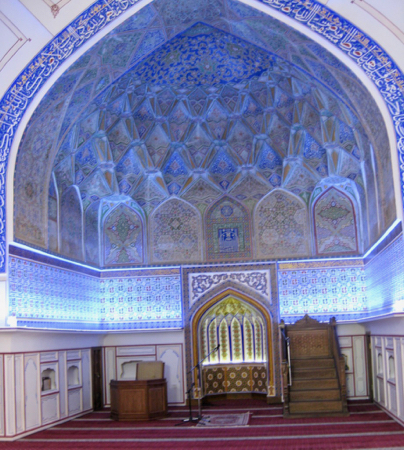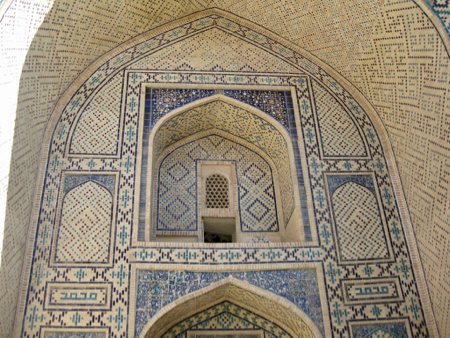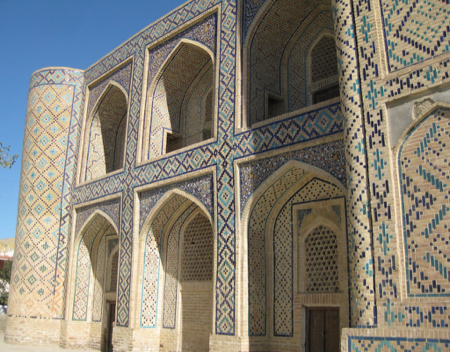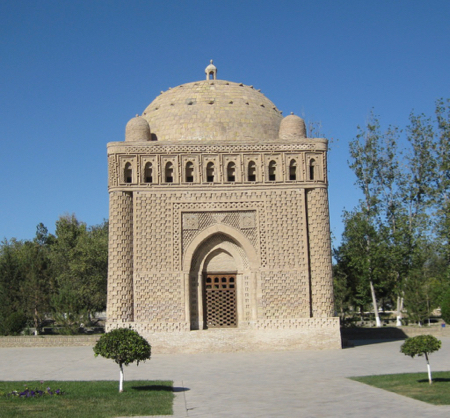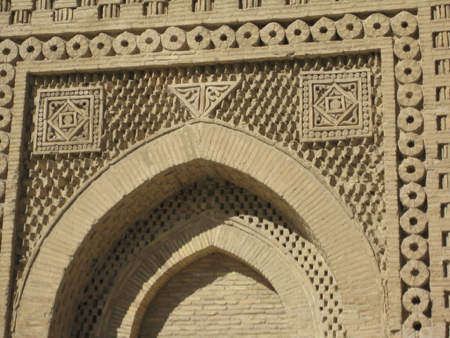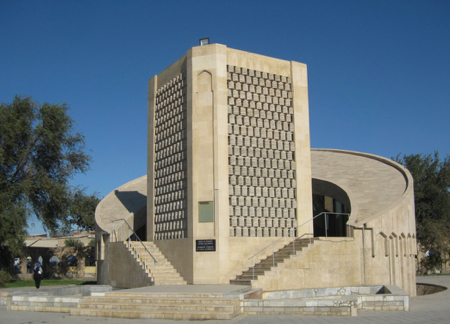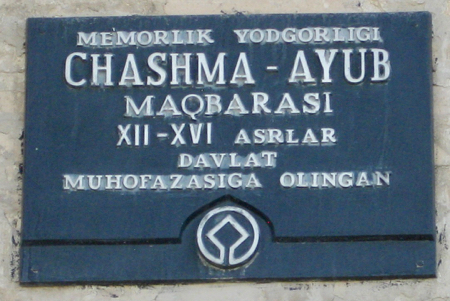Mon., 10/1/18 - Bukhara, Uzbekistan
Today we toured Bukhara’s historic sites. We started at the Ark Citadel. The fortress was home and seat of the government from the 4th c. BCE to the 20th c. CE. During the 19th c., the British and Russian empires fought for dominance in Central Asia. The rivalry was termed “The Great Game” by one of the two British emissaries sent to persuade the Khan that the Brits would protect them and keep the Russians from moving south. The Khan was incensed that the Queen herself did not come to speak with him. She was of equal status to him. So he had the two emissaries put in prison and then beheaded and buried under the entrance to the citadel. The citadel was 90% destroyed in 1920 by Russian bombing and heavy artillery. It has been largely reconstructed. We wandered through and into some of the rooms - coronation room and the PM’s mosque, which are now both museums.
Ark Citadel
Ark Citadel
Camels in lights on the wall of the Ark Citadel
Coronation room
Learning young
Traditional robe
Not sure what this is, but it looked interesting
Ark Citadel walls - restored
Ark Citadel walls -unrestored
We visited the Po-i-Kalyan Mosque Complex of 1117 with the 130 foot high Kalyan minaret, the Kalyan Mosque - a Friday mosque, and a madrassa - the Mir-Arab Madrassah. The Emir gave decrees from the outside of the mosque. It was decorated in bricks and tiles. The minaret was also used as a lighthouse to help travelers find their way to Bukhara. A Friday mosque is large and is lead by an imam. A neighborhood mosque has no leader but is a house of prayer and a holiday mosque is for the largest groups of worshipers.
Dome of the Kalyan Mosque
Kalyan Minaret (or Kalan)
Kalyan Mosque
Restoration
A reminder from Wikipedia:
"A swastika is a symbol found in many cultures, with different meanings, drawn in different styles.
The swastika is a geometrical figure and an ancient religious icon in the cultures of Eurasia, used as a symbol of divinity and spirituality in Indian religions. In the Western world, it was a symbol of auspiciousness and good luck until the 1930s, when it became a feature of Nazi symbolism as an emblem of Aryan race identity and, as a result, was stigmatized by association with ideas of racism and anti-Semitism."
Weaving
Merchant in the trade center
Hamam
Stork's nest
Magok-i-Attari Mosque - oldest in Bukhara - built in the 9th to 10th c. and currently used as a carpet museum
We rode the bus to see the 300-year-old Bolo Haouz Mosque with 40 pillars. There are really only 20 pillars but since they are reflected in a scummy pool of water in front, it got the number of 40. The mosque was for commoners and even had some hotel rooms on the second floor.
Bolo Haouz Mosque
Minaret for the mosque
Bolo Haouz Mosque
We walked a long way to the Samanid Mausoleum. It is a 9th c. jewel and the “oldest” in Central Asia. It is made of 27 different shapes of bricks. Outside are squares with a round sun in the middle and triangles. Both are Zoroastrian symbols - the triangles stand for righteous thinking, speaking and doing. The niches and corner pillars are like Buddhist design. We went inside and could see how the four square walls were bisected to 8, then 16, then 32 sides before becoming the base for the brick round dome at the top.
Samanid Mausoleum
Samanid Mausoleum
We walked on to look at the monument or memorial to Imam Al-Bukhasi the man who researched the sayings of Mohammed and wrote a second book to the Koran. The monument looks like a book with a crescent moon around it.
Memorial Complex of Imam Al-Bukhasi
We went inside the Chashma Ayub Mausoleum built over the spring where the prophet Job supposedly stuck his staff in the ground and out came water. People collect holy water from here to take home. The building is a museum of the history of irrigation. It showed how the Aral Sea has disappeared.
| Return to Top | Return to Itinerary | Return to Trips page to view other trips | Return to Dreamcatcher Home Page |
